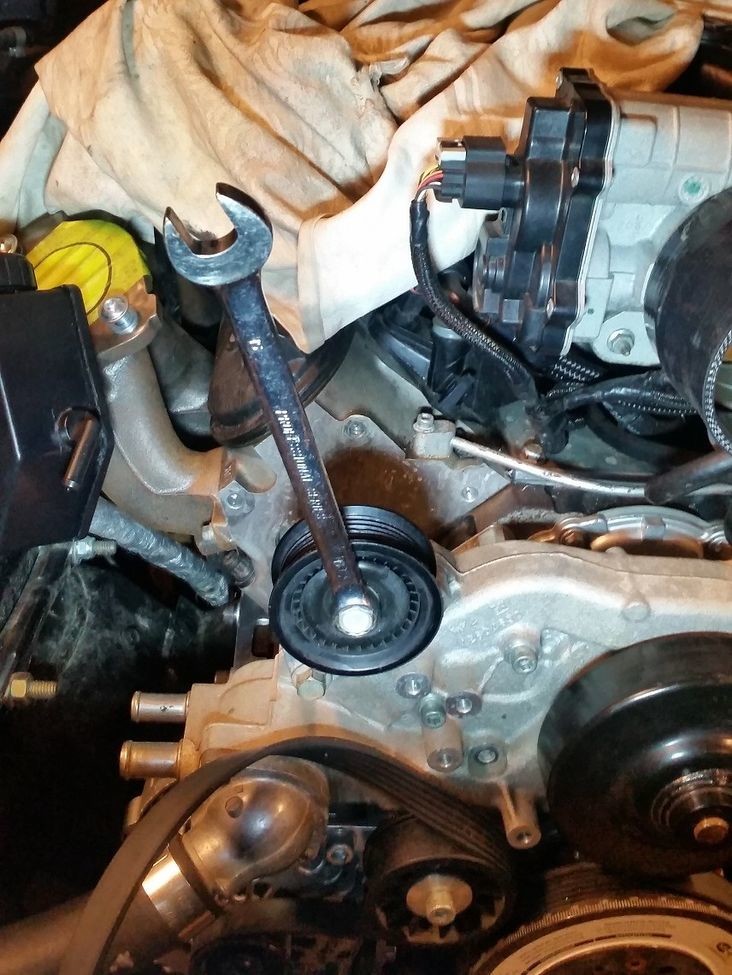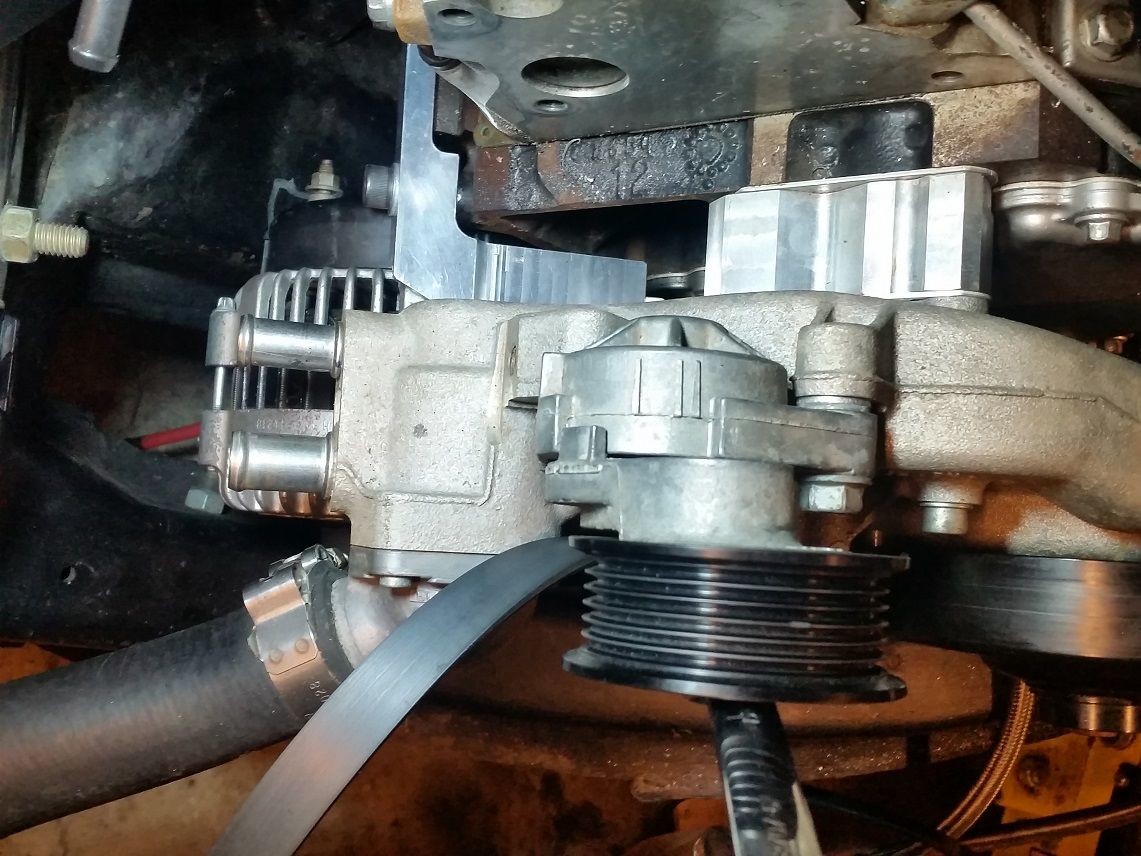You must be logged in to rate content!
3 minute(s) of a 891 minute read
12-14-2017
So thanks to Clint, I just had to enginerd out and measure some stuff.


Wrench length to the pulley bolt = 9.25", spring tensioner pivot arm (pulley bolt to arm pivot) = 1.875", so total lever arm for pull tests on the tensioner torsional spring = 11.125".
First numbers are the measured forces at the 11.125" distance from the tensioner pivot, and the second numbers are the equivalent belt pull forces (at 1.875" for tensioner arm + ~1.0" radius of the pulley itself).
The four test measurements are:
1) force to unseat tensioner from static
2) force to move tensioner to 1st "replace belt" mark
3) force to move tensioner to 2nd "belt sweetspot" mark
4) force to move tensioner to 3rd "tightest new belt" mark
1) 8.0 lbs test pull = 30.9 lbs belt pull
2) 12.3 lbs test pull = 47.4 lbs belt pull
3) 16.5 lbs test pull = 63.9 lbs belt pull
4) 17.8 lbs test pull = 69.7 lbs belt pull
You have to factor in what side of the crank pulley the tensioner is on. Clint is right that everything on the driver side of the crank pulley is being spun by a belt that is being driven directly by the crank, so the tensioner is after the crank pulley (passenger side) to take up any slack or flapping around that might happen on the "loose" side if the belt stretches.
My routing (in hindsight, should've taken tensioner location into more consideration) now puts the tensioner between the P/S pump and the alternator. So if there is resistance in the belt "down the line" from the tensioner, which the tensioner has to overcome, the tensioner could comply instead of that belt force resulting in torque on the alternator. That could happen in two cases.. 1) parasitic drag of the alternator pulley (from current generation) is too high and belt force required to turn the alternator overcomes the belt force required to activate the tensioner. Or 2) the engine is revving up faster than the inertia of the alternator wants to react, and the acceleration of the belt translates into activating the tensioner instead of turning the alternator pulley faster.
I think 2) is less likely than 1), but from my force measurements last night I'm thinking 1) might not be as big of a deal in real life... hopefully.

Wow thanks for sharing!
Posted by Diggymart on 3/3/19 @ 12:40:25 AM